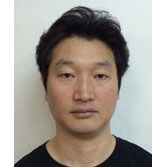Veritas Lux Mea_curated by Jung Hyosup
Prisoners who have spent a lifetime chained up in a cave will mistakenly believe that the shadows cast on the walls by the sunlight to be reality. All they can do is remind themselves of the elusive shapes of the shadows that flicker by in an instant as something passes in front of the cave. To them, the real world feels like an illusion, and the fact that shadows are merely a representation of a real object would seem like a delusion. Just like Plato tried to enlighten people with his allegory of the cave, artist Lee Moonho highlights our visual prejudice, through which we blindly believe that what we see is true. The scenes created by Lee do not simply reveal visual fallacies and distortions but also provide a wider perspective by amalgamating such misinterpretations with personal and social contexts.
Created through the artist’s sophisticated dexterity, Lee’s intricate mock-ups and the photographs thereof reveal multiple layers of visual distortions. The camera, as the mechanical embodiment of a human eye, can be likened to a glass bowl that attempts to contain a real object, and the photograph is like the reflection of the said object on the surface of the bowl. Like the shadows on the cave wall, it is impossible for photographs to perfectly capture an object in its exact state of being. Moreover, although a mock-up’s intrinsic purpose is to explore the forms of a real object, the word “mock” semantically connotes a sense of “imitation” and “derision.”By displaying a mock-up and the photograph of it side by side, in juxtaposition, the artist focuses more on the visual fallacies that arise and mutually interact throughout this artistic processes, rather than an illusion of the ideal.
The artist constantly leads the viewers to experience visual fallacies. To this end, he prompts spectators to question what they are seeing; for instance, the image of a mock-up is distorted into a spiral in line with the refraction of the wide-angle lens, or mirrors are used to create the semblance of a new space. Contemplating our blind visual prejudice that things must be as we know them, the artist expresses psychological elements like fear and anxiety (Indexfobia), and raises questions on our physical surroundings and space (Innerview).
His work, which begins with fundamental doubt towards the act of seeing, serves as a starting point for viewers to let go of their generalizations. Also, the subtle twists planted in his mock-ups and photography provide visual pleasure and at the same time raise a series of questions: Can we be sure what we see is real? Are the objects outside the cave truly closer to the essence than the silhouettes on the wall? If we incessantly follow such questions on the nature of the reality given to us, would we be rewarded with a whole new perspective, as in his work Space of Catharsis? It is up to us to decide whether to follow the light or settle for the familiar illusion.
















